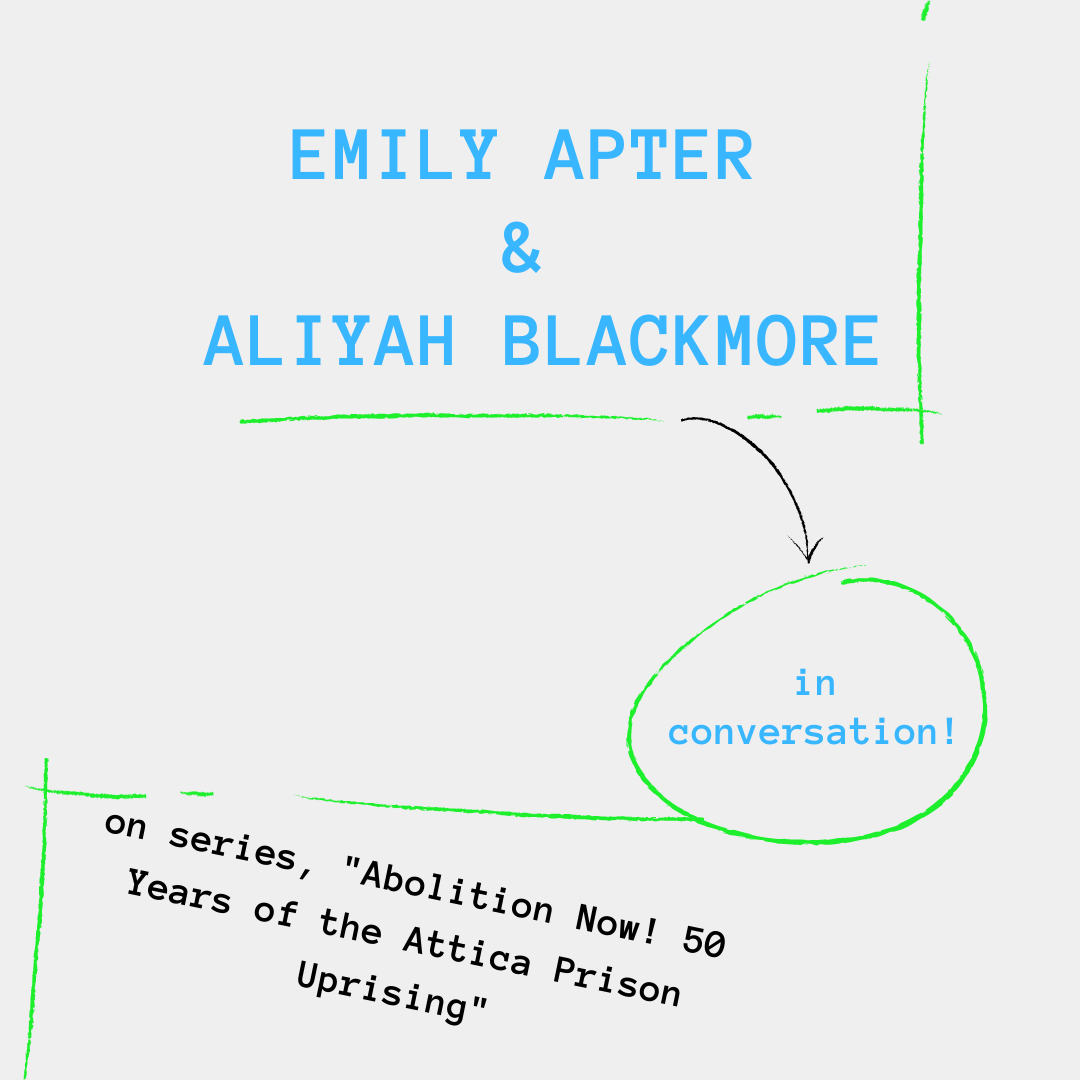Drawing on films made from 1971 to the present day, Abolition Now! 50 Years of the Attica Prison Uprising chronicles, commemorates, and politicizes the events of the 1971 uprising and massacre—tracing George Jackson’s influence—through the nonfiction visual representations that came out of it.
Series curator and MDC Programmer, Emily Apter, and Communications Manager, Aliyah Blackmore, have a virtual conversation about the legacy of the Attica Prison Uprising and the role of cinema in curating this series.
AB: Could you speak to your inspiration for the film series?
EA: I watched Cinda Firestone's ATTICA (1974) for the first time last year, and it totally blew me away. The film, which was shot by a 23-year-old Firestone during the 4-day uprising in 1971, not only documented a hugely important instance of organized rebellion, but drew attention to the fact that it is only through the Attica Brothers' organizing work that press, photographers, activists, legal observers, filmmakers (and, subsequently, us viewers!) were able to witness to the inside conditions of Attica facilities in the first place. And that made me wonder: how is the carceral system deliberately concealed from the public eye? By whom, from whom, and why? I started researching visual representations of Attica from 1971 through the present day and found that, beyond police surveillance footage, Cinda Firestone's was some of the only material taken of the events directly. The 50th anniversary of the Uprising and Massacre became the occasion to both commemorate the political prisoners/organizers murdered by the state, and also to explore gaps around the uprising in the visual archive.
AB: What is the importance of filmmaking as it relates to social movements and organizing?
EA: I think film, visual media, and cultural production are vital tools in increasing political consciousness, disrupting harmful narratives of history, drawing connections between overlapping systems/histories of oppression, circulating political propaganda, and amplifying movements or ideologies that threaten the existing social, economic, and racial order.
In the case of the Attica (and the prison system at large) I think it is an especially powerful medium for demystifying the way carceral violence is upheld—not just how it operates within actual prison facilities, but the way it is naturalized and justified across various landscapes and industries. Film is a visual medium, and carcerality is an invisibilized system of violence. For that reason, I think film is extremely useful in shedding light on these injustices and making them "visible."
I also think it is important to recognize that film, on its own, is not political action. "Political" films that are most successful in my mind are ones that agitate for social transformation, while maintaining awareness of the limits of images alone to actualize those transformations. In general, I think media and social movements go hand in hand, but I think it is necessary and useful for us—as artists and organizers—to recognize their distinct political functions.
AB: What is the importance of the legacy of the Attica uprisings?
EA: There are so many valuable take-aways from the Attica uprisings that I think can/should guide our fight for abolition in the present moment! The first one that comes to mind is the essential connection between anti-prison struggles and labor organizing (the Attica prisoners were agitating for better living conditions and working conditions). Yes, we should be fighting to topple all prisons. And simultaneously (a necessary component of that!) needs to be the abolition of the conditions of capitalism that produce, conceal, and depend on a system of exploitation, oppression, subjugation, and incarceration in the first place.





